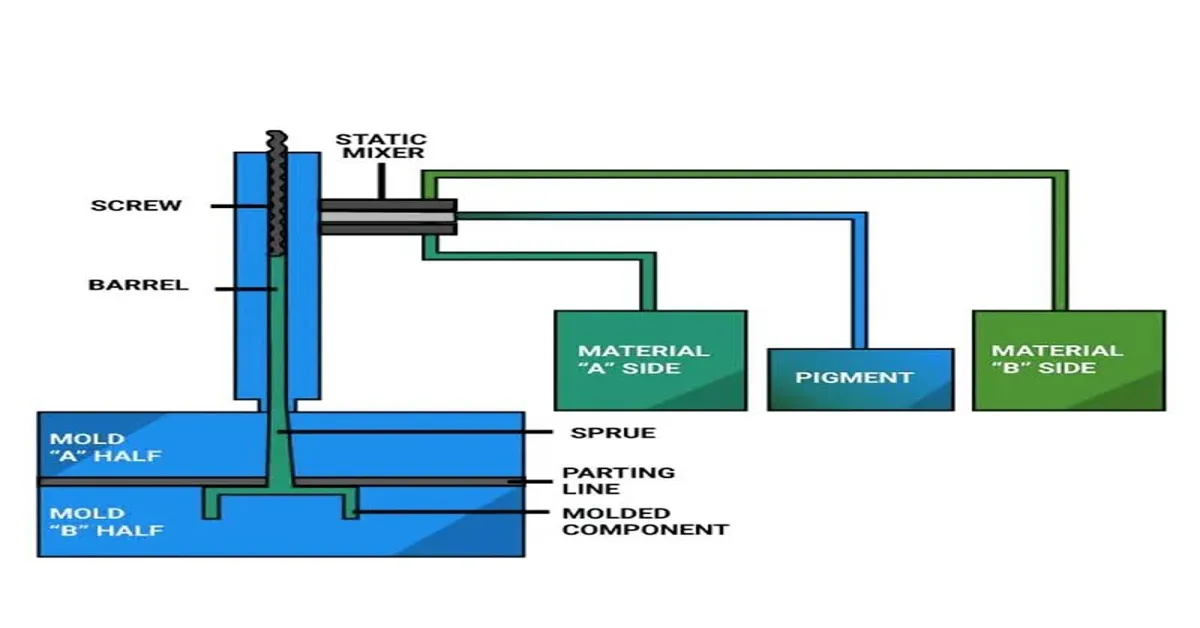Liquid Silicone Injection Molding (LIM) is revolutionizing the manufacturing industry with its precision, efficiency, and versatility. Whether you’re in the automotive, medical, electronics, or consumer goods sectors, understanding this process can help you produce better, safer, and more reliable products.
What Is Liquid Silicone Injection Molding?
Liquid Silicone Injection Molding is a process used to create rubber-like, flexible parts using high-purity, two-part silicone compounds. These parts are typically used in demanding environments due to their exceptional durability and thermal stability.
How Does the LIM Process Work?
Step-by-Step Overview
- Material Preparation: Two liquid silicone components (Part A and Part B) are mixed.
- Injection: The mixture is injected into a heated mold at high pressure.
- Curing: The silicone cures inside the mold, forming a solid elastomer.
- Demolding: The finished product is ejected from the mold.
This entire process is highly automated, ensuring precision and consistency.
Benefits of Liquid Silicone Injection Molding
1. Excellent Heat Resistance
Silicone rubber maintains stability across a wide temperature range, from -55°C to +300°C, making it ideal for harsh environments.
2. Biocompatibility
LIM is commonly used in medical applications due to its hypoallergenic and non-toxic properties.
3. Flexibility and Durability
The material can withstand stress, strain, and repeated use without deforming.
4. Complex Geometry Capabilities
Thanks to its low viscosity and flowability, liquid silicone can fill intricate mold cavities, making it ideal for producing small, detailed parts.
Common Applications of LIM
Medical Industry
- Catheters
- Seals and gaskets
- Infant products (pacifiers, bottle nipples)
Automotive Sector
- Electrical connectors
- Grommets
- Sensor covers
Consumer Goods
- Wearables
- Kitchenware
- Personal care products
Liquid Silicone Material Properties
Thermal Stability
LIM parts can withstand continuous exposure to high temperatures without degradation.
Electrical Insulation
LIM materials offer excellent electrical resistance, making them suitable for electrical and electronic applications.
Chemical Resistance
Silicone resists water, oxidation, and many chemicals, increasing its durability in challenging environments.
LIM Tooling: What You Need to Know
Tooling is a critical component of the LIM process. High-quality molds are typically made of steel and designed to withstand thousands of production cycles.
Key Considerations
- Precision Design: Ensures tight tolerances.
- Venting: Helps air escape for defect-free parts.
- Temperature Control: Uniform heating is essential for curing.
Automation in Liquid Silicone Injection Molding
Automation is a key advantage of LIM. From material mixing to injection and demolding, the process is highly automated.
Benefits of Automation
- Reduced labor costs
- Improved consistency
- Faster cycle times
- Enhanced safety
This makes LIM particularly attractive for high-volume manufacturing.
Quality Control in LIM Manufacturing
Maintaining high quality is essential, especially in regulated industries like medical and aerospace.
Common QC Measures
- Visual inspection
- Dimensional verification
- Material traceability
- Functional testing
Using advanced monitoring systems ensures that every part meets strict specifications.
Design Tips for LIM Parts
When designing parts for LIM, keep the following best practices in mind:
Uniform Wall Thickness
Maintains even curing and reduces defects.
Avoid Undercuts
Undercuts complicate demolding; try to minimize or design around them.
Use Radii Instead of Sharp Corners
Improves material flow and part strength.
Include Venting and Gating Features
Ensures complete filling and reduces air entrapment.
Future of Liquid Silicone Injection Molding
With the rise of miniaturization, wearable tech, and biocompatible devices, LIM will continue to grow. Advances in 3D printing of silicone and hybrid materials are also expanding the possibilities.
Trends to Watch
- Micro-molding for electronics and sensors
- Smart silicones with embedded functions
- Improved automation and AI in molding machines
Conclusion
Liquid Silicone Injection Molding is an advanced, efficient, and versatile process ideal for producing high-quality parts in various industries. With benefits such as excellent durability, precision, and biocompatibility, LIM is poised to remain a vital manufacturing method in the years ahead.Whether you’re designing medical devices, automotive components, or consumer products, understanding the LIM process can help you make smarter decisions, reduce production costs, and improve product quality.

